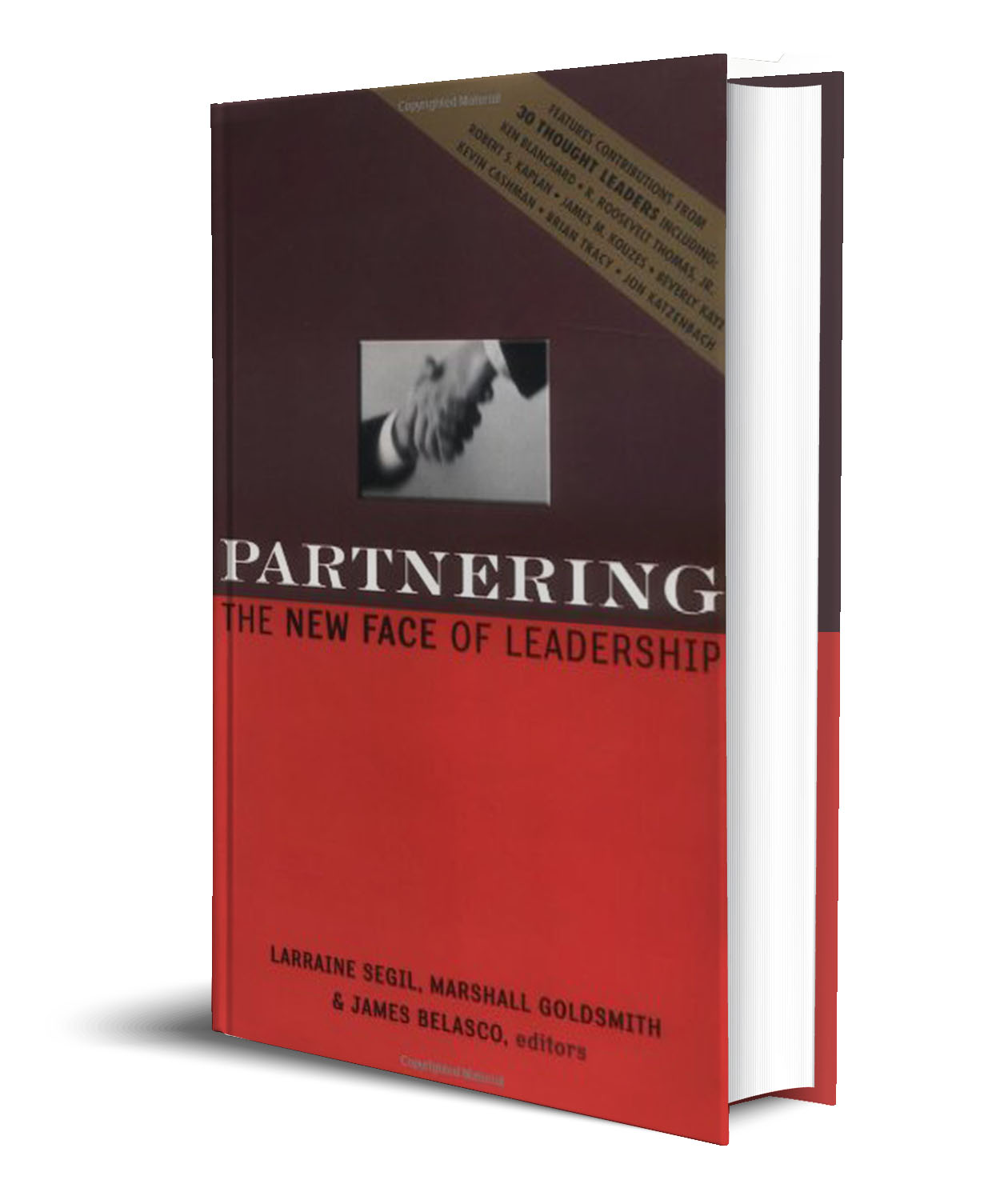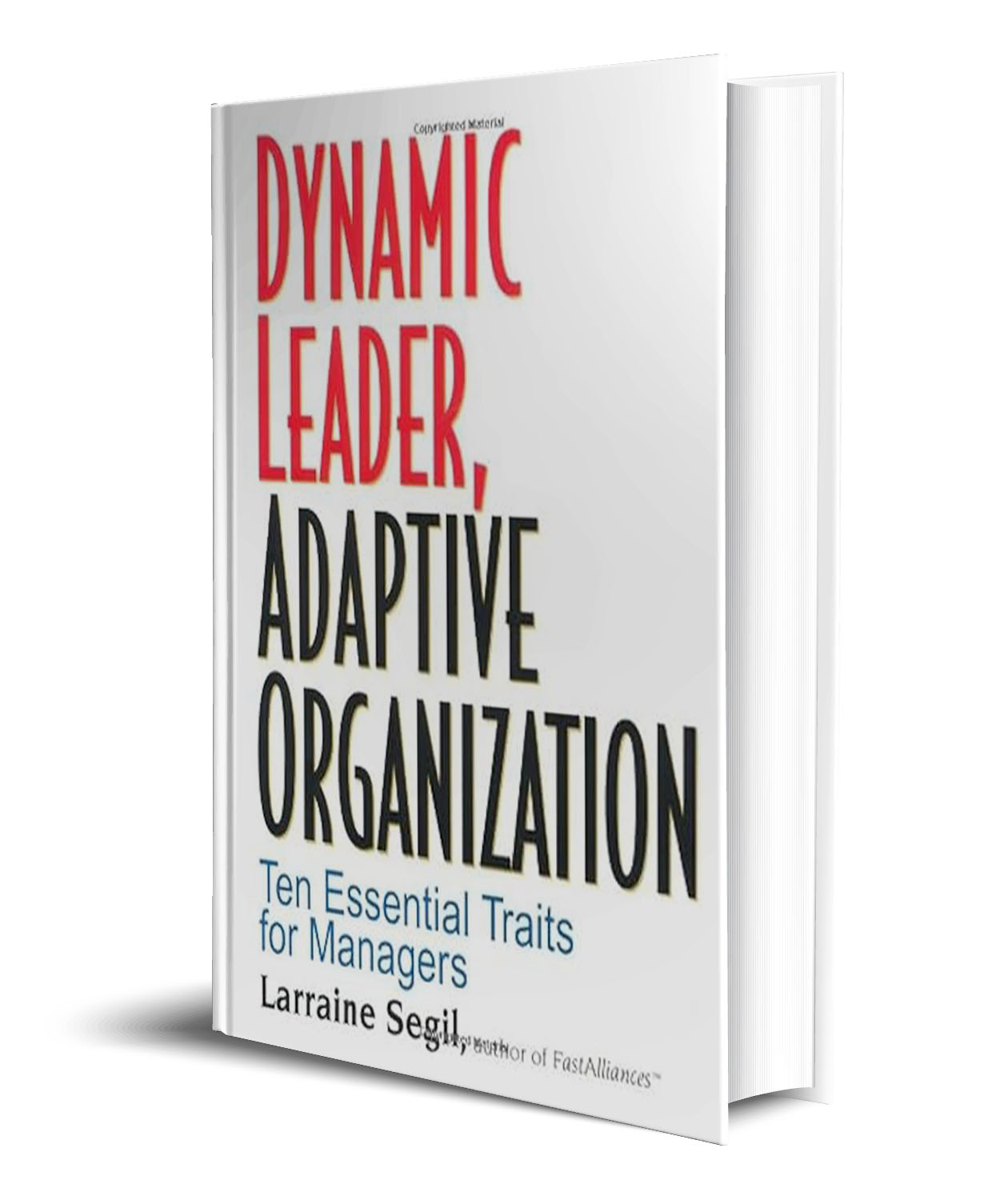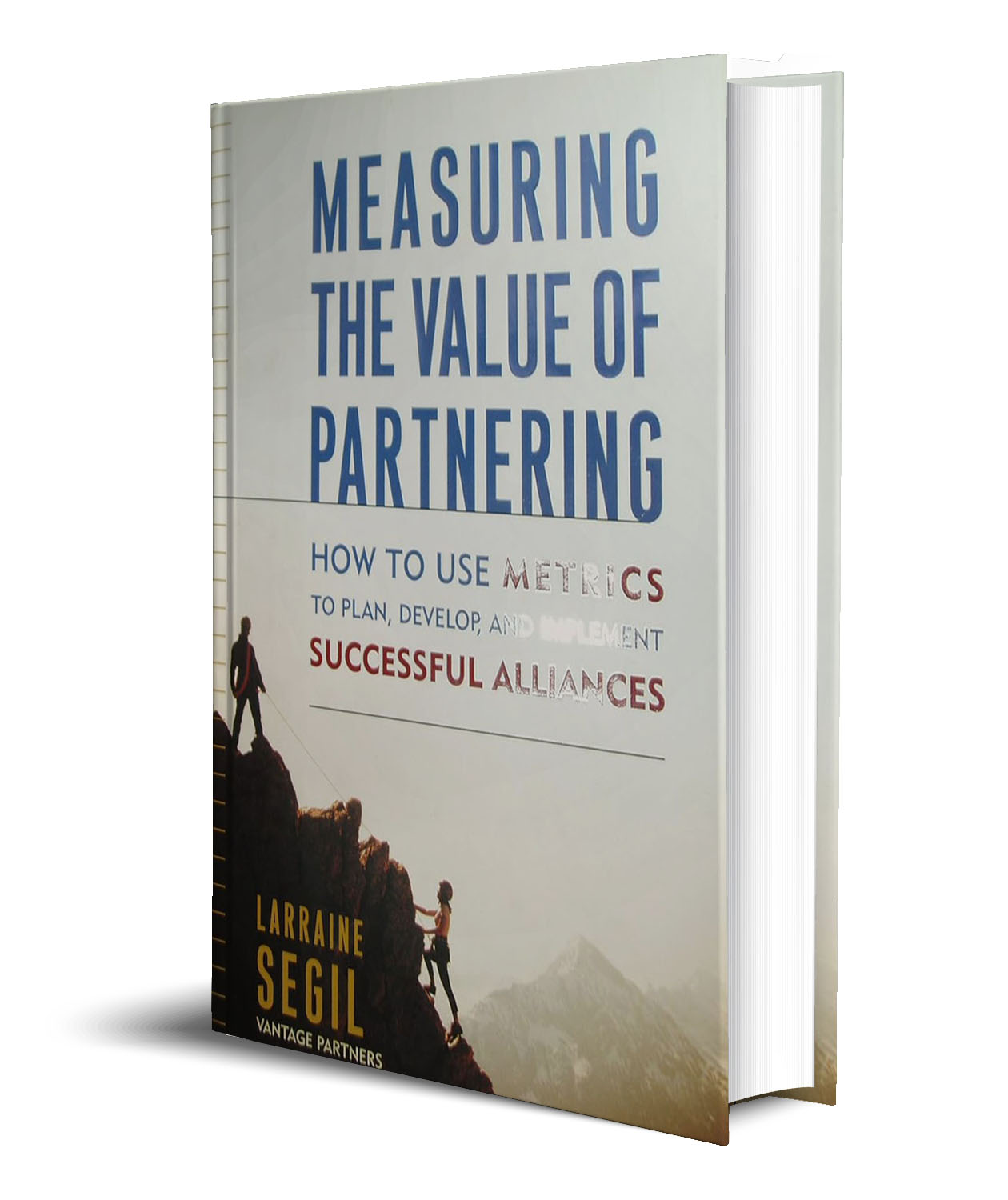Alliances: How To Get Desired Outcomes
Alliances
represent low-risk growth opportunities
-if the partnering companies know how to manage the relationship effectively.
by Joanne Sammer
Business Finance April 2006
Companies forge alliances with other organizations for a number of reasons, including to develop and market products and services and to take advantage of technology, knowledge or capabilities they do not possess.
However, the real challenge begins once these alliances are in place. By their very nature, alliances are prone to disagreement, misunderstandings and unmet expectations that can lead to conflict. “Alliances are particularly rich in potential problems in matters like the definition of costs, setting up the initial and periodic funding, estimating realistic cash-flow budgets, making major acquisitions, assuming debt, customer relationships, and so on,” says Frank Maclnnis, chairman and CEO of Emcor Group Inc., a Norwalk, Conn.-based
construction and facilities services company.
These problems can be particularly challenging because “corporate practices differ from company to company, so these issues must be identified before the alliance is created, and there should be clarity around what decisions can be made and how and by whom” says Maclnnis. For example, Emcor and one of its alliance partners, CB Richard Ellis, a commercial real estate services company, have designated spokes-people who are responsible for identifying and dealing with problems as they arise. Emcor’s spokesperson must have the decision-making authority necessary to fulfill that role, so the person in that position is always at the vice president level or higher.
Even when companies research, plan and enter a partnership with the best of intentions, it is still important for them to have a predefined process for dealing with problems and conflicts as they arise. “Flexibility post-agreement is just as important as flexibility pre-agreement,” says Maclnnis. “No one can legislate for every eventuality as each party changes and evolves, so there must be some way to deal with unforeseen changes in scope.” If the alliance agreement and partners are flexible enough, the principles governing the relationship can be effective over the long term even as the alliance changes and evolves.
 |
When Companies Clash
Unfortunately, not every company can list effective alliance management among its strengths. Even when alliances generate a significant amount of an organization’s revenue, many of these relationships fail. According to a 2005 study of 91 companies conducted by a Los Angeles-based business management consultancy, 57 percent of respondents’ alliances have failed, regardless of the number of alliances or their importance to the company. For example, businesses that have formed more than 50 alliances say that 52 percent of their alliances have failed, and companies whose alliances generate 30 percent or more of their revenue say that 49 percent of their alliances have failed.
The survey found that in most cases, alliances that failed did so because the partners were unable to work well together. Further, alliances that failed because of a poor working relationship would have realized five times as much value on average if the working relationship had been stronger. Even when a dysfunctional working relationship does not result in alliance failure, it still limits the ability of the companies involved to realize significant value from the partnership. According to the survey, truly collaborative alliances deliver 73 percent more value on average than alliances involving a partner with whom a company has a poor relationship.
One of the biggest challenges in an alliance occurs when the two partner companies have fundamentally different business models. “Those differences become exaggerated when you go to market together,” says Doug Turk, executive vice president of customer management for Inforte Corp., a Chicago-based consulting firm. For example, when Inforte, a high-cost provider, partnered with Cognizant Technology Solutions, a much larger technology firm with a lower cost structure, the two companies needed to determine what value they would deliver to customers before they could settle on the right pricing scheme.
Strengthening Alliance Relationships
So what can companies do to make their alliances work? The first step is to focus management attention on the partnership. “There is a lot of talk about financial, strategic and operational goals but not about the relationship,” says Larraine Segil.
Enterprises need to recognize that they might have to develop a more open business relationship with partners than they are accustomed to. “Being in an alliance often requires a willingness to share potentially proprietary information that the company normally would not share with another company,” says Maclnnis. “Successful alliances also require a degree of trust.”
Of course, not all alliances are created equal. That is why Segil recommends that CFOs undertake a sort of alliance triage and make sure that resources are assigned according to an alliance’s level of importance to the company. This is the approach taken by BearingPoint Inc., a McLean, Va.-based management and technology consulting firm, according to Mark Vayda, the company’s executive vice president, worldwide sales and alliances. BearingPoint categorizes its relationships as strategic, preferred and emerging.
Strategic alliances may include brand-name partners such as Oracle and Microsoft. They create a significant amount of business and have the potential to transform the organization in some way, such as by creating new products or markets for the companies involved. A full-time manager is dedicated to each alliance and maintains specific points of contact with the partner company. This manager oversees the agreements between the companies, monitors what is going to market, sets expectations and measures progress.
Alliances in the preferred category include those companies with which BearingPoint does considerable work. However, a preferred-alliance manager handles several of these alliances at one time. This manager takes care of the day-to-day work of an alliance, but regular dealings with the alliance partner fall to an executive sponsor, who is responsible for identifying opportunities within the alliance and seeking ways to leverage the alliance across other businesses.
Emerging alliances are formed with companies that show upward movement in the marketplace. These relationships merit neither an alliance manager nor an official alliance agreement. Although BearingPoint is willing to work with these companies, they need to develop a track record of accomplishment before the relationship can become an official alliance.
No matter what level an alliance fits into, BearingPoint maintains a scorecard for each relationship that allows the company to regularly track completed deals and deals in the pipeline. If the relationship is not as strong as expected, the company can decide whether to commit additional resources to the relationship. These scorecards also allow the company to identify emerging problems and trends, such as changes in the financial viability of a partner company or a proposed merger or acquisition in either company that could potentially affect the alliance. In addition, the company performs quarterly reviews of all of its alliance partners.
Other companies take a looser approach to their alliances out of concern that too much structure early in the alliance relationship could get in the way of accomplishing its goals. The partnership between Mount Prospect, Ill.-based Network Services Co., a distributor of supply systems products, and Inpacs GmbH, an alliance of European distributors of comparable products, is a case in point. They formed an alliance with the goal of serving multinational customers and suppliers throughout Europe and the United States but deliberately left the agreement loosely structured.
“We didn’t want to get caught up in the details of the arrangement at first, and this required tremendous trust on the part of both companies,” says CFO Bob Mitchum. “We were concerned that the time taken to structure a more detailed arrangement and negotiating costs would take time away from pursuing customers.” Mitchum notes that once the alliance starts to serve shared customers, the two companies will work through the specifics of the arrangement, including goals and metrics.
|
The CFO’s Role:
How does finance contribute to alliance management? “The CFO can play a pivotal role because the revenue from an alliance is enormously impacted by relationship management,” says Segil. Although this does not necessarily mean that CFOs have to get directly involved in negotiations with alliance partners, they can play a role in setting appropriate metrics and expectations for these relationships, as well as providing strategic insight.
Citizens Communications Co., a Stamford, Conn.-based telecommunications company, has been forming alliances to enhance its product offerings and gain a greater share of the estimated $240 per month its customers spend on various communications services. For example, the company’s alliance with CA, an IT management software company, allows it to provide greater online security to customers, and an alliance with Dish Network extends the range of its offerings to satellite television services.
Citizens Communications’ executive vice president and CFO Jerry Elliott is responsible for assessing the economics of a potential alliance arrangement. “I look at whether it will make money for us and what impact it might have on customer retention and acquisition,” says Elliott. “I also look at where we want to go as a company and whether the alliance will help to further those goals.” Although Elliott does not get involved in the day-to-day management of these alliances, he does play a role when the company is considering an expansion of existing relationships.
“It is critical that we know what we expect from the relationship – including the financial return on the investment – and that we use quantifiable goals and measures to track progress against those expectations,” says Elliott. Although these expectations and goals are unique to each alliance, partnerships share common objectives, such as sales, value to customers, and economic and financial results.
When CFOs become involved in alliance management, they can introduce skill sets and outlooks on the process that complement those of alliance managers. “In many cases, alliance managers are paid for the number of alliances they develop,” says Segil. “The CFO needs to look at alliances as assets, just like customer and supplier relationships, and understand which alliances are most significant from a revenue standpoint and what the keys are to those relationships.”
However, simply providing data is not enough. CFOs need to help managers use those numbers to understand the alliance, its performance, and its success or failure in meeting expectations. “Finance cannot just provide data,” says Elliott. “It needs to provide actionable information.” As a result, Citizens Communications has been working to meld marketing and sales with finance so that executives in those functions have a new way of viewing and measuring alliances.
“The CFO’s role in alliance management is very sophisticated and demanding,” says Maclnnis. “The CFO needs to know when to compromise with the other side, the company’s return on alliance investments, and when to focus on the long or short term of the relationship.” That is particularly true if the alliance partner is in a completely different business with different capital requirements. “If you work with companies in both capital-intensive and capital-light businesses, you have to respect the capital structure and criteria of both,” he says. At the same time, the CFO has to be able to reach out beyond the finance function to other areas of the company that can have an impact on the success of an alliance. “There are a lot of disciplines involved,” including finance, business development, sales and marketing, and day-to-day alliance management, says Elliott. For example, marketing executives can provide insight into how the alliance is accepted by the customer base and its impact on those customers.
Inevitably, alliances dissolve, and when that happens, the CFO has an important role to play in dealing with jointly owned assets, customers, intellectual property and tangible assets that must all be allocated. “The CFO puts on his other hat when we are getting out of a business and focuses on what we need to take away from the relationship and how best to protect ourselves from losing valuable assets,” says Maclnnis.
Joanne Sammer is a New Jersey-based business and financial writer. You can
reach her at joanne@joannesammer.com






Leave a Reply
You must be logged in to post a comment.